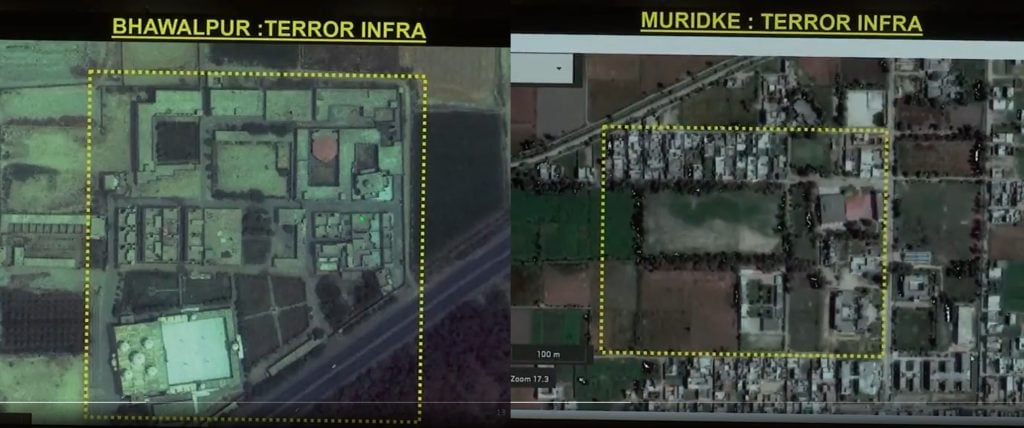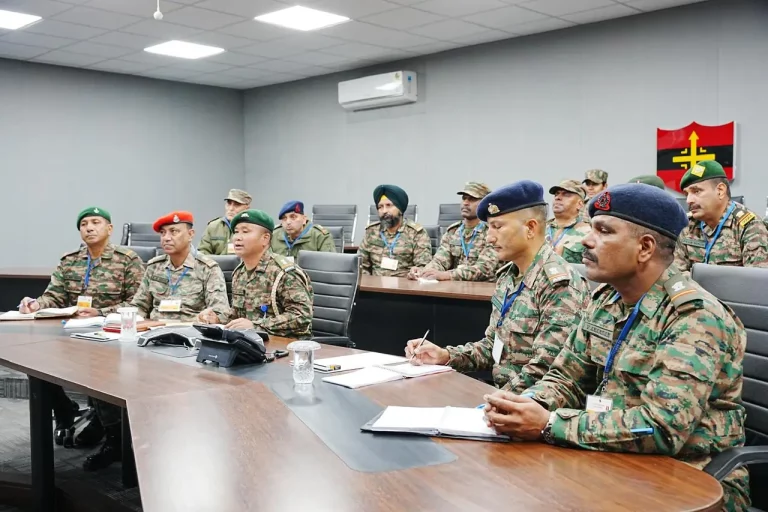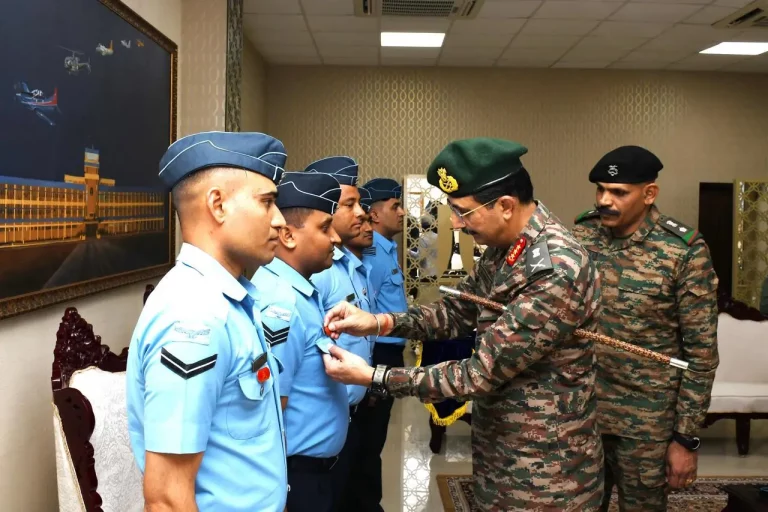In a significant escalation following the devastating Pahalgam terror attack on April 22 that resulted in 26 civilian fatalities, including a Nepalese national, India has disclosed crucial details of its retaliatory military operation, dubbed Operation Sindoor. The operation was executed on May 7, 2025, and involved precision airstrikes targeting vital terrorist infrastructures in Pakistan, specifically focused on high-value locations in Bahawalpur and Muridke.
During a press briefing, Air Marshal AK Bharti showcased satellite imagery and strike footage that confirmed the successful obliteration of select facilities associated with Pakistan-based terrorist organizations. The strike in Bahawalpur concentrated on a complex linked to Jaish-e-Mohammed (JeM), a group notorious for orchestrating multiple attacks on Indian soil, including the infamous Pulwama bombing in 2019. Meanwhile, the Muridke strike directly hit the headquarters of Lashkar-e-Taiba (LeT) and its affiliate Jamaat-ud-Dawa (JuD), which has long been identified as a central component of Pakistan’s terror network.
“Operation Sindoor was meticulously planned and executed using precision-guided munitions to ensure maximum impact on terrorist capabilities while minimizing collateral damage,” stated Air Marshal Bharti. He presented before-and-after satellite images illustrating direct strikes on weapons depots, training facilities, and communication hubs, thereby emphasizing India’s growing strike capabilities and commitment to intelligence-led military operations.
The operation, though intense, was described as brief, constituting a controlled and proportionate response aimed at dismantling terrorist networks without escalating the situation into a full-blown conflict. Legal experts have noted that these actions are in line with international law principles of self-defense, particularly in light of the ongoing unprovoked terror attacks against Indian civilians.
The strikes occurred against a backdrop of increasing global frustration regarding Pakistan’s insufficient actions against terror groups operating from its territory. India’s calls for international collaboration have intensified, especially in the context of China’s continued obstruction of efforts at the United Nations to classify JeM chief Masood Azhar as a global terrorist.
Following the offensive, a temporary military standoff arose between India and Pakistan, with reports of heightened alert status across both nations’ military forces. However, diplomatic initiatives, driven by international concern, culminated in a mutually agreed ceasefire on May 10, 2025, effectively halting direct confrontations for the time being.
As global leaders urged both nations to exercise restraint, India has maintained that any future terror attacks will meet with prompt and decisive retaliation. This reflects a robust national security doctrine focused on preemptive and retaliatory capabilities to counter terror threats.
Operation Sindoor represents a pivotal moment in India’s counterterrorism framework, merging precise military action with a concerted diplomatic approach, and signaling a determined resolve to protect its citizens and uphold national sovereignty.



















